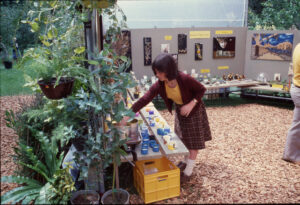Associations and institutions are welcome to apply to become members of the ALCC.
Newspapers of multicultural historical significance, papers of prominent Australian women, and other ‘orphaned’ treasures may never be seen by many Australians due to outdated Copyright rules. The Australian Libraries and Archives Copyright Coalition is calling for urgent changes to the Copyright Act.
Cultural institutions across Australia play a vital role in collecting, preserving, and sharing knowledge and culture. However, within their collections lie a vast amount of creations that are categorised as orphan works. These are works that are still in copyright, but the creator or the legal copyright owners are untraceable or unidentified. Copyright of a work generally lasts for 70 years after the creator has passed away, and is automatically passed down to the beneficiaries of the creator’s estate. Without a clear copyright owner, orphaned works are left in a legal limbo.
Orphaned material ranges from lesser-known items with minimal commercial value to creations by prominent figures in Australian history, both of which can make up a large proportion of collections held by cultural institutions. Unfortunately, current copyright laws don’t address the use of these works in today’s digital age. Justine Heazlewood, ALACC Chairperson said “We strongly support introducing an orphan works scheme that provides clarity and reduced legal risks for users, while safeguarding the interests of copyright owners. We urge the Government to make changes to the law so that everyone can activate the full potential of orphaned materials in our nation’s cultural institutions”.
This series of case studies, compiled by the Australian Libraries and Archives Copyright Coalition, aims to shed light on the range of orphan works held within cultural institutions and provide glimpses of their untold stories.
Public Record Office Victoria, Unlocking Everyday Treasures
The expanse of copyright law encompasses a wide array of original creative material, but intriguingly, it also extends its reach to encompass the seemingly trivial and unassuming. Even works of minimal originality and creativity that were never intended for commercial use are given copyright protection. Take the example of a letter sent to the Town Clerk of the City of Melbourne in 1985, penned by a Mr D Duddy inquiring into the status of ownership of land. This letter, and the subsequent reply from the City Design Manager, are held by Public Record Office Victoria (PROV) as part of Victoria’s state archive and are both still in copyright. Copyright comes into existence the moment a work is produced and for literary works, such as letters, the copyright lasts for 70 years after the death of the author. This means that these letters are most likely still in copyright. Given the 3000 boxes of similar correspondence from the City of Melbourne that PROV holds, tracing individual rights holders is both difficult and impractical. While these letters are of little commercial value, they are veritable treasures and repositories of invaluable information and insights into our collective heritage for eager researchers. These works fall into the category of orphan works, an area of copyright law that needs urgent review to ensure that the general public can access and use these works in beneficial ways.

Example of a photograph from the Education History Unit collection.
Another example from the PROV collections, similar to collections held by other institutions across Australia, is a collection of 30,000 photographs ranging from 1983-2003 and acquired from the Education History Unit of the Department of Education. Scant information exists about the creators of these images, whether they were employed by the state government or if the image was acquired from elsewhere. Despite their limited commercial value, the wealth of information these images offer to researchers is immense. PROV is legally allowed to digitise these images and provide online access under s 200AB of the Copyright Act 1968, yet researchers would not be able to reproduce or reuse copies despite the fact that doing so would in no way be detrimental to the rights holders. Both of these examples held within PROV collections may lack commercial value, yet they’re rich in historical detail reflecting Australian life. Australia needs a fit for purpose orphan works exception to unlock orphaned material.
